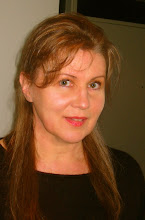Planck wrote a mathematical equation involving a figure to represent these individual units of energy, which he called quanta. The equation explained the phenomenon very well; Planck found that at certain discrete temperature levels (exact multiples of a basic minimum value), energy from a glowing body will occupy different areas of the color spectrum. Planck assumed there was a theory yet to emerge from the discovery of quanta, but, in fact, their very existence implied a completely new and fundamental understanding of the laws of nature. Planck won the Nobel Prize in Physics for his theory in 1918, but developments by various scientists over a thirty-year period all contributed to the modern understanding of quantum theory.
The Development of Quantum Theory
- In 1900, Planck made the assumption that energy was made of individual units, or quanta.
- In 1905, Albert Einstein theorized that not just the energy, but the radiation itself was quantized in the same manner.
- In 1924, Louis de Broglie proposed that there is no fundamental difference in the makeup and behavior of energy and matter; on the atomic and subatomic level either may behave as if made of either particles or waves. This theory became known as theprinciple of wave-particle duality: elementary particles of both energy and matter behave, depending on the conditions, like either particles or waves.
- In 1927, Werner Heisenberg proposed that precise, simultaneous measurement of two complementary values - such as the position and momentum of a subatomic particle - is impossible. Contrary to the principles of classical physics, their simultaneous measurement is inescapably flawed; the more precisely one value is measured, the more flawed will be the measurement of the other value. This theory became known as the uncertainty principle, which prompted Albert Einstein's famous comment, "God does not play dice."
The Copenhagen Interpretation and the Many-Worlds Theory
The two major interpretations of quantum theory's implications for the nature of reality are the Copenhagen interpretation and the many-worlds theory. Niels Bohr proposed the Copenhagen interpretation of quantum theory, which asserts that a particle is whatever it is measured to be (for example, a wave or a particle), but that it cannot be assumed to have specific properties, or even to exist, until it is measured. In short, Bohr was saying that objective reality does not exist. This translates to a principle called superposition that claims that while we do not know what the state of any object is, it is actually in all possible states simultaneously, as long as we don't look to check.To illustrate this theory, we can use the famous and somewhat cruel analogy of Schrodinger's cat. First, we have a living cat and place it in a thick lead box. At this stage, there is no question that the cat is alive. We then throw in a vial of cyanide and seal the box. We do not know if the cat is alive or if it has broken the cyanide capsule and died. Since we do not know, the cat is both dead and alive, according to quantum law - in a superposition of states. It is only when we break open the box and see what condition the cat is that the superposition is lost, and the cat must be either alive or dead.
The second interpretation of quantum theory is the many-worlds (ormultiverse theory. It holds that as soon as a potential exists for any object to be in any state, the universe of that object transmutes into a series of parallel universes equal to the number of possible states in which that the object can exist, with each universe containing a unique single possible state of that object. Furthermore, there is a mechanism for interaction between these universes that somehow permits all states to be accessible in some way and for all possible states to be affected in some manner. Stephen Hawking and the late Richard Feynman are among the scientists who have expressed a preference for the many-worlds theory.


No comments:
Post a Comment